84 F. high in the Twin Cities Wednesday.
Slight severe storm risk later today over much of central and southwestern Minnesota.
Saturday: nicer day of the weekend with high pressure over southern Minnesota, low humidity, highs in the mid 70s.
August: 2.6 degrees F. warmer than average in the Twin Cities (no 90s yet this month).
 9 separate billion-dollar disasters
9 separate billion-dollar disasters across the USA so far in 2011. That ties the all-time record of 9 set in 2008 (NCDC).
2011: 2 billion-dollar plus floods, 5 separate billion-dollar tornado outbreaks, and a billion dollar blizzard. This year severe T-storms have cost $20 billion, double what's normal. Source: AP.
108 separate billion dollar plus disasters across the USA since 1980. Total damage estimate: $750 billion (NCDC).
$5.2 billion: estimated cost of the record heat and drought to Texas farmers so far in 2011.
Hurricane Harvey approaching the southeastern USA next week? Details below.
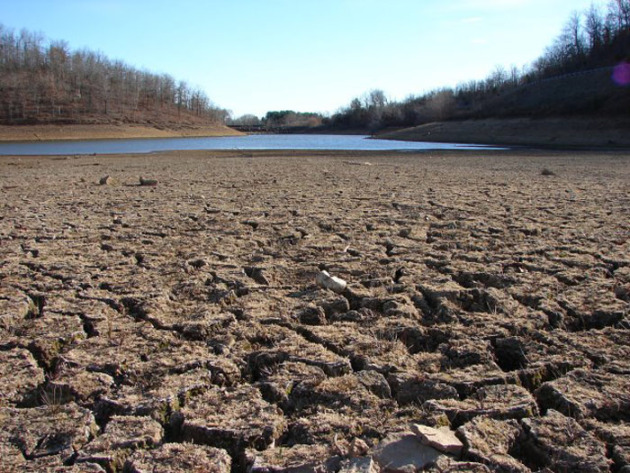
"...
This drought will have a lasting impact on Texas agriculture," said Travis Miller, an agronomist with the AgriLife Extension Service. "The most remarkable thing is the extent and the severity of the drought combined." More than 90 percent of Texas is listed by the U.S. Drought Monitor as being in either "extreme" or "exceptional" drought, the two worst categories. - MSNBC article on the record drought in Texas below.
"
As you can see to the west, there are some clouds," Richards recited. "We are all hoping for the best -- that the weather is going to bypass us. But there is a very good chance that it won't. So just a quick heads-up before the show starts: If there is a point during the show where we have to stop the show onstage, what we'd like to have you do is calmly move toward the exits and then head across the street to either the Champions Pavilion, the Blue Ribbon Pavilion or the Pepsi Coliseum. And then, once the storm passes and everything's safe, we're going to try our best to come back and resume the show -- which we have every belief that that's going to happen." - announcement to the crowd gathering for the Sugarland concert, 4 minutes before the stage collapsed.
"
It was a freakish act of God," fair spokesman Andy Klotz said at a news conference Tuesday afternoon, "and I don't know how it could have been prevented." - article below from
Indystar.com about the 3 days of weather alerts leading up to Saturday's tragic stage collapse at the Indiana State Fair.
* photo credit above: investigators on Tuesday surveyed the wreckage of the Indian State Fair Granstand stage, where five people were killed Saturday night. Matt Detrich/The Star.
* there have been 3 stage collapses this year: Oklahoma, outside Toronto (Cheap Trick concert), and now the Indiana State Fair. Evidence of severe weather or shoddy construction? The reality: these temporary stages are simply not engineered to be able to withstand near-hurricance force gusts.

“..
.It’s all one contrived phony mess that is falling apart under its own weight. Al Gore is a prophet all right, a false prophet of a secular carbon cult, and now even moderate Democrats aren’t buying it.” - Texas Governor Rick Perry.
Indiana State Fair Received 3 Days Of Bad-Weather Alerts Before Sugarland Stage Collapse. Here's a rather damning story from
indystar.com: "
Emergency responders nationwide know what a National Weather Service warning means: Take cover. Immediately. But that wasn't the message Indiana State Fair officials delivered to concertgoers when they received that warning -- the most serious alarm the National Weather Service can sound -- at 8:39 p.m. Saturday. Instead, fair officials waited six minutes and then told 12,000 Sugarland fans a very different message: The show would go on. That was four minutes before high winds knocked over the stage structure, killing five people and injuring more than 45 others. "Wow, that's incredible," weather.com meteorologist Tim Ballisty said of that fateful decision not to immediately evacuate the Grandstand. "It pains me to hear that because then the assumption is: Sugarland's about to come on; I don't want to miss this."
Meteorologist, Author Says Indiana State Fair Stage Collapse Was A Needless Tragedy.
Fox59.com has the details: "
A prominent meteorologist and author says there is plenty of evidence that the deadly stage collapse at the Indiana State Fair could have and should have been prevented. "There is no doubt in my mind that this was a needless tragedy," said meteorologist Mike Smith, senior vice president of AccuWeather. As the author of a book called, "Warnings, the true story of how science tamed the weather", Smith looked into how technology, forecasting and planning have helped prevent tragedies caused by severe weather. Smith takes exception to how state fair leaders have described the events that led to the deadly stage collapse on Saturday. "This was a freakish act of God and I don't know how it could have been prevented," said Indiana State Fair Spokesman Andy Klotz during a news conference on Tuesday."
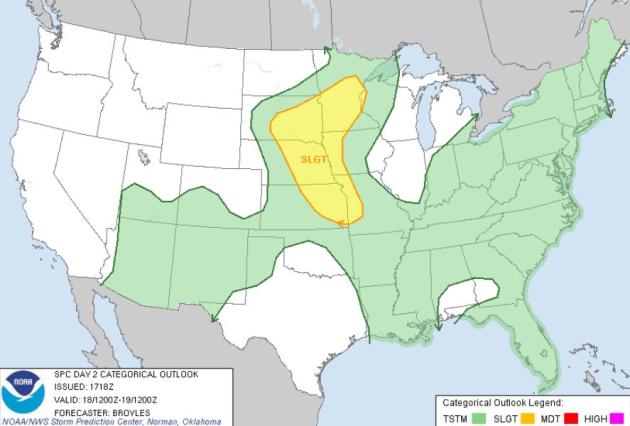 Thursday Severe Threat
Thursday Severe Threat. According to SPC a few storms may exceed severe limits (58 mph winds and/or 1"+ diameter hail)
from central Minnesota southward to Kansas City.
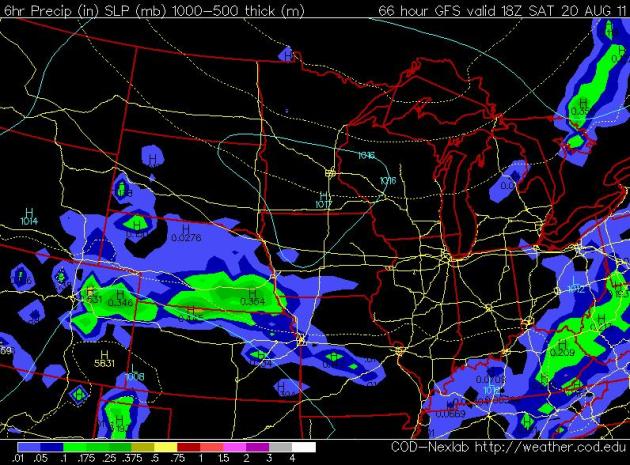 Saturday: Sunnier, Drier Day Of The Weekend.
Saturday: Sunnier, Drier Day Of The Weekend. The GFS
model brings a well-timed bubble of high pressure over southern Minnesota during the day Saturday. The result should be generous sunshine, highs in the 70s, with dew points in the 50s. Not bad...
 Sunday: Slight Thunder Risk
Sunday: Slight Thunder Risk. According to the GFS model the best chance of heavy T-storms will come over far northern Minnesota, but a stray late-day shower or T-storm can't be ruled out farther south, with the best chance south/east of MSP.
Hurricane Hype And False Alarms. Yes, it's true: the GFS and other long-range models bring a strong tropical storm or possible hurricane into the southeastern USA the latter half of next week. This would be a good time to remind people about the limitations of long-range weather forecasting. Late August is prime-time for hurricanes, so we don't want to ignore the models altogether - but be VERY skeptical about any forecast beyond 3-4 days. Here's a post on the "phantom hurricane" from the Washington Post's
Capital Weather Gang: "
As you may have heard, some of the global weather models are insisting on tropical storm and hurricane development in the Atlantic Basin at some point during the next week. Some bloggers are posting forecasts 240 hours (or more) into the future and anticipating the possibility of a hurricane along at the East Coast at the end of next week. Look above, there’s a developing tropical cyclone five days from now in the GFS model southeast of Puerto Rico. In ten days, the European model has this tropical cyclone off the coast of Florida (the GFS has it over Florida). But we should not view these long-range simulations as reliable forecasts. Rather, we need to use considerable caution drawing conclusions from model guidance more than a few days out. Potentially threatening forecasts like these aren’t too surprising, given that we are approaching the most active phase of the hurricane season. It’s the time of year when some of these models in their long-range predictions are notoriously unafraid of spawning phantom tropical cyclones out of thin air."
Hurricane Harvey? Place Your Bets. The GFS model outlook for next Thursday evening at 7 pm shows what appears to be a powerful hurricane just off the east coast of Florida. It's more than a week away - long range computer models are notoriously unreliable - but the past few runs have (fairly consistently) brought a tropical storm or possible hurricane into the southeast by late next week. We'll see if this is just noise, or if future models continue to bring a potential hurricane toward the Florida/Georgia coast.
Drought So Far Cost Texas Farms A Record $5.2 Billion. The update from
MSNBC: "
The blistering drought in Texas has caused an estimated $5.2 billion in crop and livestock losses so far this agricultural season, a record figure likely to rise further, state officials said Wednesday. Field surveys from November 2010 to Aug. 1 this year indicate livestock losses of $2.1 billion and crop losses of $3.1 billion in Texas. "There can still be some (more) losses there when we see what's harvested," said David Anderson, an economist with Texas A&M University's Texas AgriLife Extension Service, which released the numbers. "I think it's going to get bigger."
Texas Heat Stats:
- Houston, TX reached 100+ Wednesday, marking the 17th consecutive 100+ day. #2 on the list is 14 days in 1980.
- Wichita Falls, TX surpassed 100+ Wednesday, extending the record for the number of 100+ days in a calendar year to 81 days. Previous record, 79 days in 1980.
- Waco, TX hit 100+ Wednesday, marking the 65th day of 100+ highs. The previous record was 63 in 1980.
- Dallas, TX had a low Wednesday of 85, breaking the record of 80+ lows in a year. The current number is 40 days. The previous record was 39 in 1998.
 Hot & Wet.
Hot & Wet. According to NOAA the USA has seen 1,594 records in the last week, the focus of intense heat over Texas and Louisiana, but record 24-hour rainfall reports (green dots) have been numerous from the Great Plains to New England. Meanwhile, parts of the west are experiencing record nighttime lows and cool daytime highs. A lop-sided weather map. Click
here to see an interactive map from Ham Weather.
August Rainfall So Far In Florida:
- Vero Beach 8.70”
- St. Petersburg 7.51”
- West Palm Beach 7.50”
- Key West 6.34”
- Fort Pierce 6.22”
- Miami 5.73”
- Tampa 5.23”
- Orlando 5.12”
- Fort Meyers 4.57”
- Daytona Beach 4.41”
- Jacksonville 4.27”
- Ft. Lauderdale 4.24”
- Gainesville 3.01”
* photo above courtesy of NOAA.
Photo Of The Day: "Altocumulus Lacunosus". Thanks to Jen Scheer, who lives in Florida, for this spectacular photo of "kitchen sponge clouds", probably altocumulus lacunosus, illuminated by a setting sun. Check out the original on Jen's
flickr account.
NOAA's National Weather Service Taking Action To Build A "Weather-Ready" Nation. Here's a press release from
NOAA: "
NOAA is launching a comprehensive initiative to build a “Weather-ready” nation to make America safer by saving more lives and protecting livelihoods as communities across the country become increasingly vulnerable to severe weather events, such as tornado outbreaks, intense heat waves, flooding, active hurricane seasons, and solar storms that threaten electrical and communication systems. NOAA is also announcing that the United States has so far this year experienced nine separate disasters, each with an economic loss of $1 billion or more — tying the record set in 2008. The latest event to surpass the $1 billion price tag is this summer’s flooding along the Missouri and Souris rivers in the upper Midwest. This year’s losses have so far amounted to $35 billion. “Severe weather represents a very real threat to public safety that requires additional robust action,” said Jack Hayes, director of NOAA’s National Weather Service. “The increasing impacts of natural disasters, as seen this year, are a stark reminder of the lives and livelihoods at risk.” In partnership with other government agencies, researchers, and the private sector, the National Weather Service is charting a path to a weather-ready nation through:
Billion Dollar Disasters Since 1980. Looking for the safest place to live? Consider Arizona or Utah, maybe upstate New York or New England? 99 separate billion dollar disasters since 1980, nationwide. Total damage estimate: $750 billion. Check out all the details in this pdf from
NCDC, the National Climatic Data Center, a division of NOAA.
 Alaskan Thunderstorms
Alaskan Thunderstorms. This is a bit unusual: strong storms over Alaska - pretty far north for mid August. Unusual, but not unprecedented. Here's a
Facebook post from the Alaska office of the National Weather Servi
ce: "
Yesterday was one of the more active thunderstorm days this summer over southcentral Alaska, with quite a few storms in the Matsu Valley and Talkeetna Mountains. Here is an animation of the thunderstorms late yesterday from various webcames across Southcentral."
30 Killed As Heavy Rains Cause Flood In Pakistan. The
Times of India has the story: "
ISLAMABAD: At least 30 people were killed and one million people affected as floods triggered by heavy monsoon rains have devastated parts of southern Pakistan. Chief minister Qaim Ali Shah of the southern Sindh province said the rains and breaches in canals had affected about one million people in six districts. Thirty people had died in the affected areas, he told the media in Karachi last night. The deluge inundated villages and destroyed crops in areas of Sindh that were among the worst-hit by last year's unprecedented floods, which affected 21 million people and caused losses of billions of rupees across Pakistan." (photo credit:
file pic).
Ireland Experiencing The Coldest Summer In 25 Years. Yes, the weather is out of kilter, off-balance.
AccuWeather has more details on an unusually cool/wet summer for Ireland: "
Counties in central and southern Ireland have been experiencing temperatures that are between 0.2 degrees C and 0.9 degrees C below normal this summer. The Irish weather site Met Eireann reported that the mean temperatures for June around the country have been about 1 degree C lower than normal. July also is reported to have had lower-than-average mean temperatures for the month. The temperatures were about 0.5 to 1 degree C below normal. A weather station at Casement Aerodrome, located in the south west of Dublin, reported a temperature of 4.7 degrees C (40.46 F) on July 22. This was the lowest temperature reported there since 1984." (photo above courtesy of NASA).
"Deep Thunder". Here's an interesting post from
IBM (which powers many of the supercomputers used for weather modeling around the world): "
In 1996, IBM began exploring the “business of weather,” hyper-local, short-term forecasting and customized weather modeling for clients. Now new analytics software, and the need for organizations from cities to energy utilities to operate smarter, are changing the market climate for these services. As Lloyd Treinish, chief scientist of the Deep Thunder program in IBM Research explains, this approach isn’t about the kind of weather reports people see on TV, but focuses on the operational problems that weather can present to businesses in very specific locales—challenges that traditional meteorology doesn’t address. For example, public weather data isn’t intended to predict, with reasonable confidence, whether three hours from now the wind velocity on a 10-meter diving platform will be acceptable for a high stakes competition. That kind of targeted forecasting was the challenge that IBM and the US National Oceanic and Atmospheric Administration (NOAA), parent of the US National Weather Service, took on in 1995."
For The First Time, More Corn Used For Ethanol Than Livestock. The story from
The Gazette: "
For the first time ever, more of the corn crop may go into gas tanks than into the stomachs of cattle and poultry destined for kitchen tables. The prediction drew little response last week when it was released by the USDA in its Crop Production and Supply/Demand Report for the 2011 crop season. The USDA kept its prediction for ethanol production demand for corn at 5.05 billion, but lowered demand projections for livestock feed by 100 million bushels to 5 billion bushels. That fuel now tops livestock as the primary user of corn struck at least one observer as noteworthy. “That’s a first-time-ever type of change,” University of Missouri Extension economist Ron Plain said in a statement released by the university."
Earth's Closest Asteroid Encounter Later This Year, Scientists Will Test Altering Path Of Another One. Here's a vaguely alarming story from the
International Business Times. What's that famous George Carlin line, "Hey, don't sweat the thundershowers!" "
It's time to get ready for another interplanetary object encounter as NASA has confirmed that a very dark, nearly globular asteroid will pass between Earth and the moon later this year. Dubbed as 2005 YU55, the almost round asteroid is 400 meters in size. Although it has been classified as a "potentially hazardous object," NASA says it poses no threat of an Earth collision over the next 100 years. "This will be the closest approach to date by an object this large that we know about in advance, and an event of this type will not happen again until 2028 when asteroid (153814) 2001 WN5 will pass to within 0.6 lunar distances," NASA said. Scientists said that on Nov. 8 and 9, the object will reach a visual brightness of 11th magnitude and should be easily visible to observers in both hemispheres. The 2005 YU55 has a rotation period of approximately 20 hours. Since it will approach Earth from the sunward direction, it will be a daylight object until the time of closest approach, scientists said." (graphic above courtesy of NASA).
Every Hour Of TV You Watch May Shorten Your Life By 22 Minutes. Uh oh. Oh well, it's quality, not quantity, right? Here's the story from
LinkedIn and Yahoo News: "
In case you needed more proof that watching excessive amounts of TV is bad for your health: new research shows that there is a correlation between the amount of time you spend in front of the TV and how long you live. A study by researchers at the University of Queensland in Australia has concluded that, for every hour of television watched after age 25, the average human lifespan drops by 22 minutes. A person who watch six hours of TV per day will, on average, live five years less than people who spent less time on the couch and in front of the television screen. Those are some scary numbers. The study tracked data from 11,000 Australian participants over the age of 25. It was published earlier this month in the British Journal of Sports Medicine."
 Another Perfect Day
Another Perfect Day. A subjective analysis? Yes - but it would be tough to find a nicer example of fine August weather. No fog, no humidity, generous sun with light breezes, highs ranging from 73 at Grand Marais to 80 in St. Cloud, 84 in the Twin Cities (urban heat island adding a few degrees, I suspect).
Paul's Conservation Minnesota Outlook for the Twin Cities and all of Minnesota:
TODAY: Partly sunny, a bit more humid. Isolated storms possible up north. Dew point: 62. Winds: S 15. High: 83
THURSDAY NIGHT: Slight chance of a T-storm. Low: 64
FRIDAY: Isolated shower, turning breezy and less humid PM hours. Dew point: 60. High: near 80
SATURDAY: Sunnier day of the weekend, comfortably cool. Dew point: 52. Winds: NW 8-13. Low: 59. High: 75
SUNDAY: Some sun, probably dry in the metro - storms far north? Dew point: 55. Winds: NE 3-8. Low: 60. High: 78
MONDAY: Unsettled, isolated PM shower possible. Low: 59. High: 75
TUESDAY: Unstable, few PM pop-up showers? Low: 57. High: 78
WEDNESDAY: Plenty of sun, probably dry. Low: 62. High: 81
Healthy Paranoia
Intel's Andy Grove said, "only the paranoid survive." He's right, of course, and that healthy state of paranoia applies to severe weather. In spite of Doppler radar and pin-point warnings (average lead time for tornado warnings has increased from 7 minutes in 1975 to 13 minutes in 2010) you're pretty much on your own when it comes to severe storms. You may not hear NWS warnings. You may not be able to hear the sirens. Common sense applies. Today's weather blog examines the Indiana State Fair tragedy. Officials knew there was a severe storm coming; announcements were made, but most Sugarland fans stayed in their seats. There was no sense of urgency or danger. What's the take-away? A storm strong enough to spark lightning may be capable of violent winds. Ground-floor rest rooms are the safest spot. And consider an alerting "app" for your smart phone - cheapest life insurance around.
Anoka is still drying out after Tuesday evening's 3.2" rain (to their credit the local NWS issued a Flood Warning 3-4 hours in advance).
A T-shower is possible later today (a few may be severe) with a stray shower spilling over into early Friday; lukewarm sun most of the weekend with highs in the 70s. Lake water may be warmer than the air temperature. The joys of August!
* "shelf cloud" photo above, a strong tip-off of potentially violent, straight-line winds, courtesy of NOAA.
Perry And Romney Split On Global Warming. Here's an excerpt of a story at the
Washington Post: "
A sharp divide has emerged between two leading Republican presidential candidates on the issue of climate change. While apparent front-runner Mitt Romney believes the world is getting warmer and that humans are contributing to that pattern, Texas Gov. Rick Perry on Wednesday called that “a scientific theory that has not been proven.” Taking questions at the storied Politics and Eggs breakfast in Bedford, N.H., Perry was asked about a passage in his book, “Fed Up!,” in which he expresses skepticism of the science behind global warming.
In the book, Perry writes that there has been “doctored data” and accuses former Vice President Al Gore, who won a Nobel Peace Prize for his call to action on climate change, of being a “false prophet of a secular carbon cult. “They have seen the headlines in the past year about doctored data related to global warming,” Perry writes. “They know that we have been experiencing a cooling trend, that the complexities of the global atmosphere have often eluded the most sophisticated scientists, and that draconian policies with dire economic effects based on so-called science may not stand the test of time. Quite frankly, when science gets hijacked by the political Left, we should all be concerned.”
Rick Perry: Global Warming Isn't Caused By Humans. The
Houston Chronicle as the story: "
Texas Gov. Rick Perry, the red-hot candidate for the Republican presidential nomination, scoffed at global warming at a breakfast meeting with business leaders in Bedford, N.H., this morning. “I think we’re seeing almost weekly, or even daily, scientists that are coming forward and questioning the original idea that manmade global warming is what is causing the climate to change,” the Texas governor said on the first stop of a two-day trip to the first-in-the-nation primary state. He said some want billions or trillions of taxpayer dollars spent to address the issue, but he added: “I don’t think from my perspective that I want to be engaged in spending that much money on still a scientific theory that has not been proven and from my perspective is more and more being put into question.”
Global Warming May Deliver A Jolt To Coffee Lovers. Now you've gone too far, Paul. Climate change seems very esoteric, someone else's problem, until it starts to affect the cost of coffee beans. Prediction: riots in the streets. Here's an excerpt of a story at
thestar.com: "
Global warming could deliver a jolt to coffee lovers – and not the kind they’ve come to crave first thing in the morning. Up to 60 per cent of the world’s coffee-growing regions will no longer be viable by 2050 thanks to climate change, according to a recent estimate from the Global Coffee Quality Research Initiative. And that, says Trillium Asset Management researcher Jonas Kron, represents a major financial risk for companies who count on coffee for their profits. Trillium and Calvert Investment Management, Inc. called on U.S. consumer products giant Smucker’s to produce detailed disclosure of climate-related risks as part of its financial statements. “I’m not prone to hyperbole, but climate change is going to be the biggest financial issue for the next generation,” said Kron, adding that Smucker’s got 40 per cent of its revenues and 48 per cent of its earnings from coffee last year."
NW Today: Trout Face Climate Change Troubles. The story from
spokesman.com: "
BOISE — A study by fisheries researchers concludes that climate change might cut the West’s trout habitat in half over the next 70 years. The Idaho Statesman reports the study was published Monday in Proceedings of the National Academy of Sciences. Trout Unlimited’s Seth Wenger and U.S. Forest Service biologist Dan Isaak were among 11 researchers who found, among other things, that cutthroat habitat could dwindle between 33 percent and 58 percent. That’s after the range of cutthroat habitat has already shrunk by more than 85 percent due to competition from non-native species like rainbow trout and brook trout. Two subspecies have already gone extinct. Isaak said he knows there will be skeptics but defends the foundations of the research. The climate predictions are based on 10 of the 20 climate models developed independently worldwide that all show the world is getting warmer. “The climate models have been right for 30 years and they are getting better all the time,” Isaak said. The study concludes warmer winters are causing more winter floods that wash away the gravel that holds brook and brown trout eggs." (photo above courtesy of the EPA).


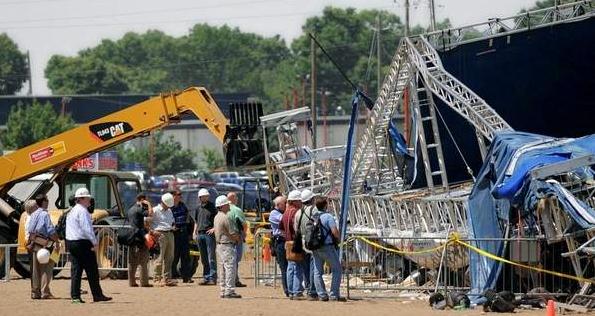






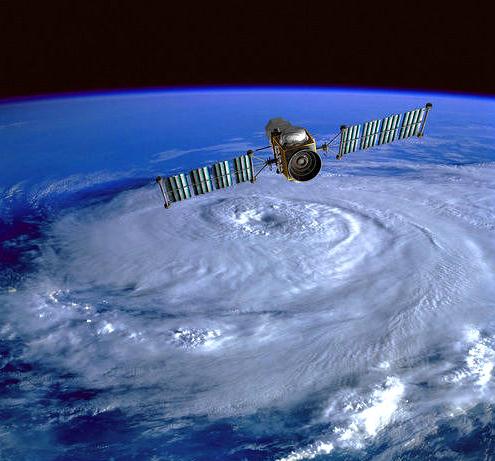

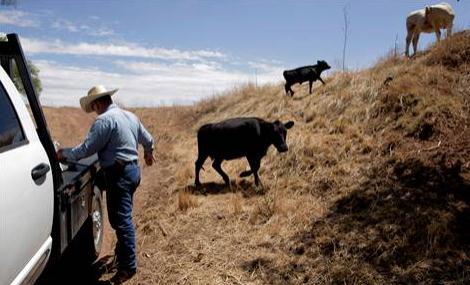


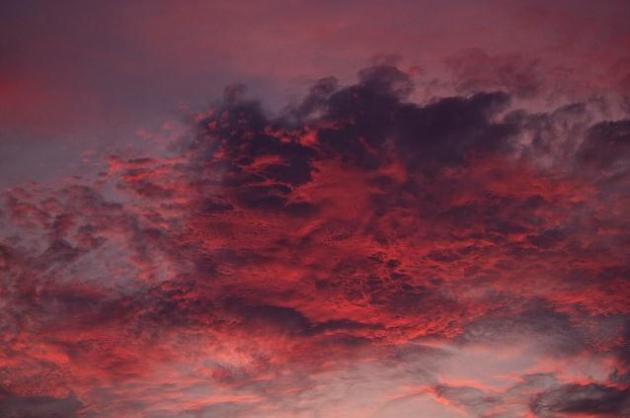



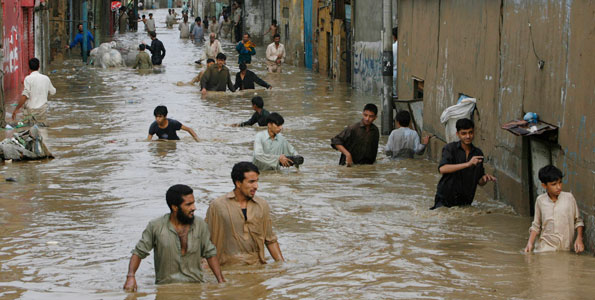

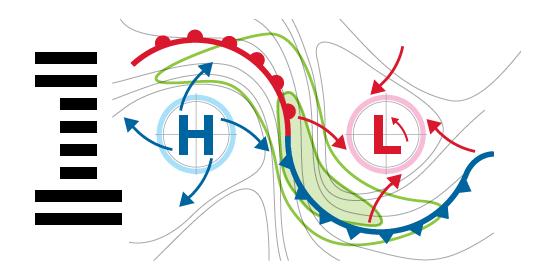





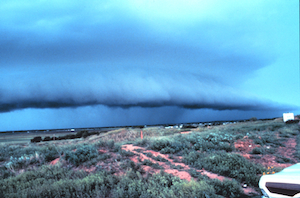
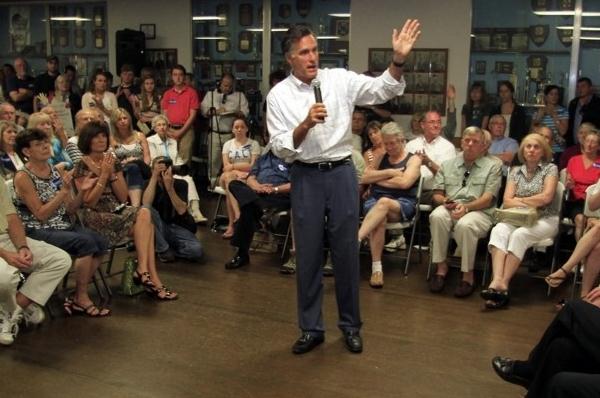



No comments:
Post a Comment